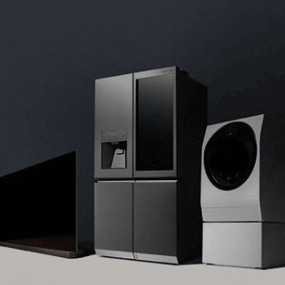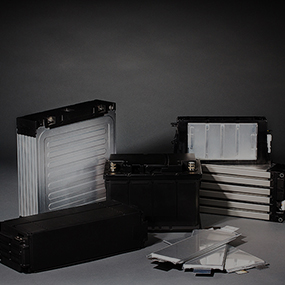LG Display Reports Fourth Quarter 2019 Results
2020.01.31SEOUL, Korea (Jan. 31, 2020) – LG Display today reported unaudited earnings results based on consolidated K-IFRS (International Financial Reporting Standards) for the three-month period ending December 31, 2019.
■ Revenues in the fourth quarter of 2019 increased by 10% to KRW 6,422 billion from KRW 5,822 billion in the third quarter of 2019 and decreased by 8% from KRW 6,948 billion in the fourth quarter of 2018.
■ Operating loss in the fourth quarter of 2019 recorded KRW 422 billion. This compares with the operating loss of KRW 436 billion in the third quarter of 2019 and the operating profit of KRW 279 billion in the fourth quarter of 2018.
■ EBITDA in the fourth quarter of 2019 was KRW 586 billion, compared with EBITDA of KRW 613 billion in the third quarter of 2019 and with EBITDA of KRW 1,134 billion in the fourth quarter of 2018.
■ Net loss in the fourth quarter of 2019 was KRW 1,817 billion, compared with the net loss of KRW 442 billion in the third quarter of 2019 and the net income of KRW 153 billion in the fourth quarter of 2018.
LG Display registered KRW 6,422 billion in revenues and KRW 422 billion in operating loss in the fourth quarter of 2019.
The revenue increase of 10% quarter-on-quarter was driven by a rise in sales of large-size OLED panels for TVs and P-OLED (Plastic OLED) panels for smartphones which also resulted in an 18% increase of ASP (Average Sales Prices) compared to the previous quarter.
LG Display saw a rise in P-OLED shipments, as it secured a sound base for strategic customers for P-OLED in the fourth quarter. However, the company’s operating loss improvement on a quarter-on-quarter basis was limited due to an increase in fixed costs for full-scale P-OLED mass-production and additional costs for the company’s move towards structural innovation for its LCD business.
LG Display posted KRW 1,817 billion in net loss in the fourth quarter, reflecting asset impairment losses calculated by the K-IFRS standard, which are KRW 200 billion with the company’s withdrawal from the OLED Lighting business and KRW 1.4 trillion won due to the unfavorable circumstances for P-OLED business compared to when the initial decision on the investment was made.
Panels for TVs accounted for 28% of the revenue in the fourth quarter of 2019, 4% down from the previous quarter due to sales decline in commodity LCD TV panels which resulted from its efforts towards structural innovation in the LCD business. Panels for mobile devices accounted for 36%, an 8% quarter-on-quarter increase, driven by the shipment increase of P-OLED panels for smartphones, while those for tablets and notebook PCs accounted for 20% and desktop monitors for 16% respectively.
LG Display recorded 185% in the liability-to-equity ratio, 93% in the current ratio, and 81% in the net debt-to-equity ratio as of December 31, 2019. Some ratios are affected by the asset impairment.
“LG Display’s liability-to-equity ratio was temporarily increased in the fourth quarter due to the asset impairment, but this is expected to start to gradually improve down the road. The positive anticipation is that factoring in asset impairment this time means that uncertainty in the future is expected to be removed and possible fluctuation in the company’s future business is also expected to be reduced. In addition, depreciation costs will be reduced by KRW 300 billion each year in the next five years,” said Dong-hee Suh, CFO and Senior Vice President of LG Display.
He added, “As the current business environment for P-OLED is somewhat challenging but also presents many business opportunities ahead, LG Display will consistently maintain our strategic direction regarding P-OLED business and build a sound base for growth. In addition, we will make efforts to achieve a significant revenue increase in large-size OLED panels as our OLED plant in China will ramp up production, and continue to stably manage forecasts for P-OLED panels for smartphones as well as for automobiles, for which we will increase shipments during the first half of this year. All these efforts will create meaningful opportunities for earnings improvement from the second half.”














